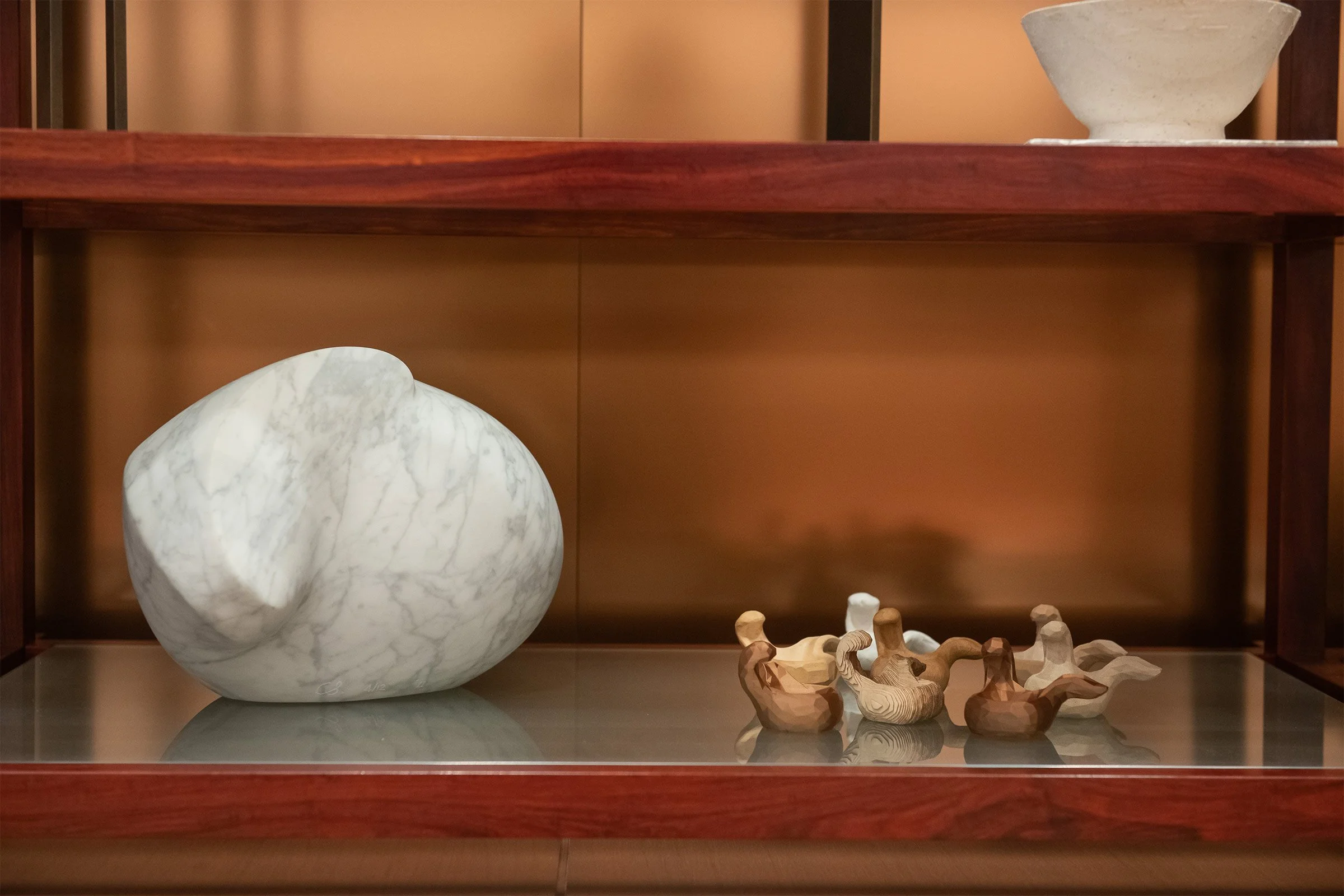Hong Kong Heritage Illuminated

Hong Kong’s Studio Florian and Christine designed the Tai O light using location-specific waste materials and working in collaboration with local marine craftspeople. We speak with the designers to find out more about the project, which highlights Hong Kong’s microplastic pollution problem and the value of heritage crafts in sustainable design
Design Anthology: How did the Tai O light project come about?
Florian Wegenast: Christine and I started out in London collecting waste material from the Thames riverside, which brought us to our first project — supported by Design Trust — that involved upcycling sea waste in Hong Kong. In Hong Kong, we’ve been exploring the design process of combining local waste material with heritage craft. We believe that our methodology of using location-specific waste materials combined with local craft and culture creates objects and narratives that highlight the value of heritage in modern design.
We have always loved the history of Hong Kong and its roots as a humble fishing village. Through our personal research, particularly in marine and fishing culture, we noticed the issue of pollution, and microplastic pollution in particular. We also were curious about the traditional fishing culture and looked for opportunities to collaborate with local marine craftspeople to expand the conversation about local sustainability within the city, as well as to bring an awareness to the way of life in fishing villages.
We proposed our research and project proposal in the Techstyle for Social Good international competition organised by The Mills Fabrica. We were awarded the grand prize in sustainability, which gave us the support and studio space to realise our vision of working with local fishermen.
In your view, what are the most significant sustainability-related factors in both the making process of the Tai O light and the product itself?
FW: Although we are a two-person studio, we believe design should be collaborative and as inclusive as possible. So, while the Tai O light is produced from 100% recycled nylon 3D filament and handwoven waxed cotton fishing nets, we believe that besides using sustainable materials, it’s the collaborative design process that leads to a discussion around the importance of sustainable design and living.
We documented this design journey by creating a short film to share this story, and to showcase the project we created a small-scale exhibition and an accompanying public workshop to increase awareness of Hong Kong’s marine waste issues associated with the fishing industry, as well as the disappearing craft of traditional fishing net weaving.
How did you come to use recycled marine nylon filament for 3D printing?
FW: During our research we found that most fishing nets have an estimated lifespan of as little as seven to 14 days. Nylon is the material most often used for these nets; it’s fairly reliable for a short period of time but eventually becomes porous when exposed to UV light and salt water for too long. When the nylon thread is inevitably discarded, it can often end up as microplastic pollution.
So, we wanted to somehow incorporate recycled nylon from fishing nets into our project while simultaneously infusing heritage craft. While researching materials we came across Fishy Filaments’ 100% recycled marine nylon 3D printer filament, which had qualities that we believed would align with the sustainable direction of our project.
Christine Lew: Working closely with 3D-printing specialists we were able to experiment and eventually find a 3D-printing setting suitable for this recycled filament. Since this material is still quite new to the market, we were one of the first to attempt to 3D print large-scale objects with it.
Can you talk us through the relationship between the traditional and modern processes involved in creating the lamp, and how they come together in the final object?
CL: For the past two years, we’ve been exploring the value of preserving heritage craft and how we can make these overlooked skills relevant in modern design. Our primary interest for this project was learning and documenting the heritage and culture of Hong Kong’s Tai O fishing village.
As we explored Tai O, we were very inspired by the traditional fishing techniques and especially the heritage craft of hand-weaving fishing nets. This skill isn’t widely utilised anymore, as most fishermen today just buy pre-made nets, but we were fortunate enough to find a master fishing net weaver who taught us the skills.
We were curious to see how we could fuse a traditional craft like fishing net weaving with a very modern fabrication process. During our research, we came across the 3D printing filament by Fishy Filament, and we felt these two seemingly different materials had a unique fit with one another. This led us to experimenting with combining fishing net weaving and 3D printing to create a hybrid design object that displays both the beauty of heritage craft and modern design innovation.
Your studio works at the intersection between ‘sustainable materials, craft, and social innovation’. Do you think there’s a social innovation aspect to the Tai O light, and if so, can you describe it?
CL: We’ve benefited from the generosity of craftsmen and fellow creatives worldwide who are willing to share their knowledge and time with us, and we want to give back by sharing the skills and knowledge we’ve learned.
Our priorities for this project included bringing awareness to and creating new dialogues with the Tai O community, especially the older generation of fishermen and their fast-disappearing way of life. In design, we define ‘social innovation’ as bringing together different collaborators with unique skills and voices to explore new hybrid ways of how the old and new can come together, traversing culture, generations and different ways of thinking.
Lastly, where can we see the Tai O light?
FW: The light itself, and documentation of our material exploration, is currently on show at The Mills’ Techstyle X store. While the original light will be exhibited at smaller exhibitions throughout the year, we’re currently working on creating new derivatives of it for sale.
Images / Courtesy of Studio Florian and Christine
Video / Directed by Ricky Nyhoff















